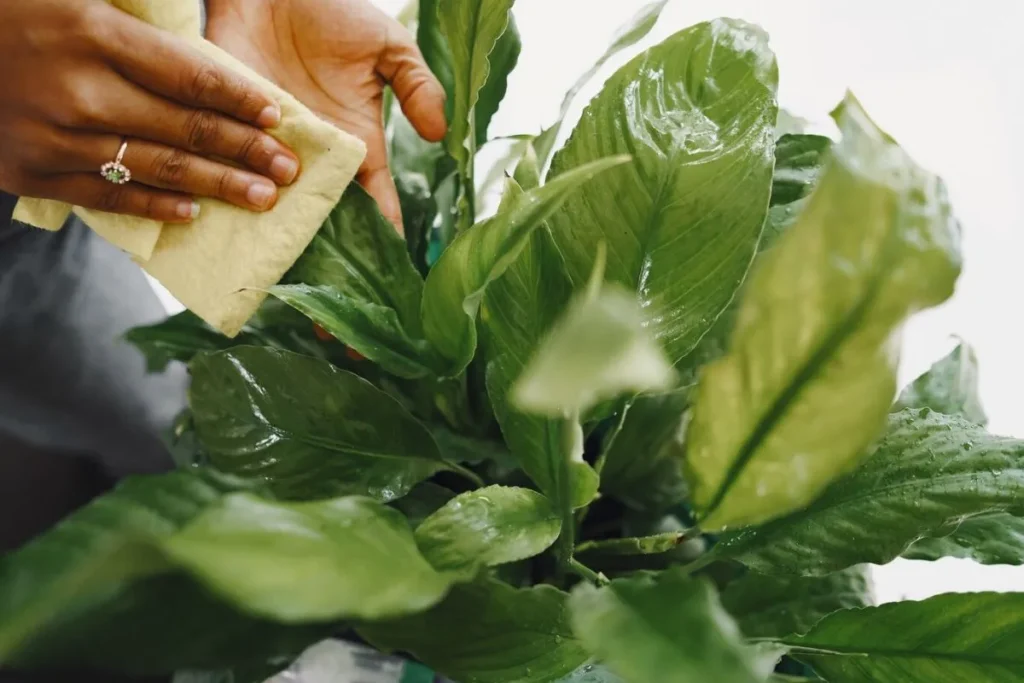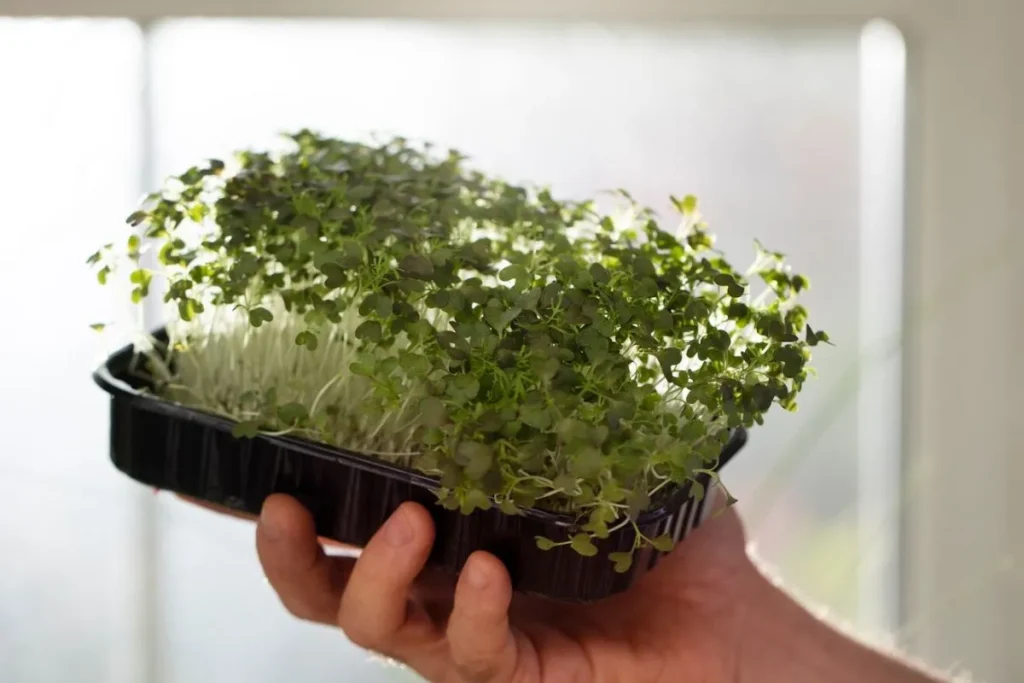Cultivating edible spirulina at home is a fascinating and rewarding endeavor. Spirulina, a type of blue-green microalgae, has gained popularity due to its high nutritional value.
This superfood is packed with nutrients and offers numerous health benefits, making it a great addition to your diet. In this article, we’ll explore the steps, optimal conditions, and benefits of growing spirulina at home.
What is Spirulina?
Spirulina is a type of cyanobacteria that thrives in warm, alkaline water. It is often found in tropical and subtropical lakes.
It has been consumed for centuries due to its high protein content and nutritional benefits. Spirulina is rich in vitamins A, B1, B2, B3, iron, and calcium, making it a comprehensive dietary supplement.
Cultivating edible spirulina at home allows you to reap these benefits directly from your own microalgae culture.
Benefits of Growing Edible Spirulina
There are numerous benefits associated with growing spirulina at home. Firstly, it ensures a fresh supply of this nutritious superfood.
It also provides a sustainable and cost-effective way to enhance your diet. Home-grown spirulina is free from contaminants commonly found in commercial supplements.
Cultivating edible spirulina at home supports eco-friendly practices by reducing the carbon footprint associated with transport and packaging.
Nutritional Powerhouse
Spirulina is a nutritional powerhouse, offering a dense concentration of essential vitamins and minerals. It contains a high percentage of protein, making it an excellent choice for vegetarians and vegans.
The presence of antioxidants like phycocyanin helps to combat oxidative stress, and its anti-inflammatory properties support overall health.
Cultivating edible spirulina at home guarantees an unadulterated source of these nutrients.
Boosting Immunity
Regular consumption of spirulina has been linked to improved immune function. Its high vitamin C and antioxidant content helps in strengthening the immune system.
This microalgae also promotes the production of white blood cells and antibodies, enhancing defense mechanisms against infections.
Cultivating edible spirulina at home ensures you always have this immune-boosting supplement on hand.
Supporting Weight Management
Spirulina’s high protein content and low-calorie count make it ideal for weight management. It helps in reducing appetite and increasing metabolism, promoting weight loss.
By integrating it into your diet, you can enjoy better satiety and less frequent snacking. Cultivating edible spirulina at home adds a practical component to your weight management efforts.
Optimal Conditions for Cultivation
To successfully grow spirulina, it’s critical to create the ideal environment. A constant warm temperature and alkaline water conditions are key.
Spirulina thrives at temperatures between 30°C to 40°C (86°F to 104°F). The water pH should be maintained between 8.5 and 10.5 for optimal growth.
Light is another essential factor, with spirulina needing sufficient sunlight or artificial lighting to carry out photosynthesis effectively.
Setting Up Your Spirulina Culture
Setting up a spirulina culture at home involves acquiring a starter culture, culture medium, and appropriate containers. You can purchase spirulina starter kits online or from specialty stores.
Fill your container with nutrient-rich water and add the starter culture. Ensure the water is aerated, which can be achieved using an aquarium air pump.
Monitor the water temperature and pH levels regularly to maintain ideal growing conditions. Adjust as necessary to support healthy spirulina growth.
Maintaining the Culture
Ongoing maintenance involves regular checks and adjustments. Ensure the water remains clear and free from contaminants. Algae blooms and other pollutants can hinder spirulina growth.
Harvesting should be done periodically to encourage continuous growth. Use a fine mesh or cloth to strain the spirulina, then rinse and dry it for consumption.
With consistent care, cultivating edible spirulina at home can yield an ongoing supply of fresh, healthy microalgae.
Harvesting and Processing Spirulina
Once the spirulina has proliferated, it’s time to harvest. Use a filter or cloth to collect the biomass, then rinse it to remove excess water and impurities.
Dry the spirulina for long-term storage or use it fresh in smoothies, salads, or other recipes. Drying can be done using a dehydrator or by spreading it thinly in the sun.
Proper drying ensures preservation, maintaining the nutrient profile and extending the shelf life of your home-grown spirulina.
Nutritional Benefits
Spirulina is known for its exceptional nutrient profile. It’s a complete protein source containing all essential amino acids. In addition, it provides substantial amounts of vitamins A, B, and E.
The high iron and calcium content support various bodily functions, including bone health and blood production. Beta-carotene in spirulina aids in maintaining healthy eyesight.
By cultivating edible spirulina at home, you can directly benefit from these extensive nutrients without the additives found in commercial products.
Improving Gut Health
Spirulina promotes healthy digestion and gut flora. Its natural fiber content aids in regular bowel movements and prevents constipation.
The presence of prebiotic substances in spirulina fosters the growth of beneficial gut bacteria, enhancing overall digestive health.
Cultivating edible spirulina at home ensures a steady intake of these gut-friendly nutrients, supporting your digestive system naturally.
Enhancing Energy Levels
Regular consumption of spirulina can help improve energy levels. Its dense nutrient composition contributes to better metabolic function and energy production.
The presence of B-vitamins, especially B12, plays a crucial role in energy metabolism and reducing fatigue.
Cultivating edible spirulina at home ensures that you have a potent source of natural energy booster.
Promoting Heart Health
Spirulina has been shown to support cardiovascular health by reducing cholesterol levels and blood pressure. Its high antioxidant content helps in maintaining healthy blood vessels.
The presence of omega-3 and omega-6 fatty acids in spirulina aids in balancing cholesterol levels, thus promoting heart health.
By cultivating edible spirulina at home, you can take proactive steps towards maintaining a healthy heart.
Challenges of Cultivating Spirulina at Home
While cultivating edible spirulina at home has many advantages, there are challenges to consider. Maintaining the ideal environmental conditions requires attention and diligence.
Temperature fluctuations, contamination, and improper pH balance can impede spirulina growth. Regular monitoring and adjustments are necessary to ensure optimal growth conditions.
However, with proper knowledge and practices, these challenges can be mitigated, allowing for successful home cultivation.
Monitoring Environmental Factors
Accurate monitoring of temperature, pH levels, and light exposure is essential. Using appropriate tools like pH strips, thermometers, and light meters can help in maintaining ideal conditions.
Consistent checks and timely adjustments ensure the healthiest spirulina growth. Automated systems can also be beneficial for maintaining stable environments.
Addressing these factors proactively simplifies the process of cultivating edible spirulina at home.
Addressing Contamination Risks
Contamination poses a significant risk to spirulina cultures. Using clean, sanitized equipment and water is crucial.
Regularly inspecting the culture for signs of unwanted algae or pollutants helps in early detection and management.
Having a contingency plan for contamination ensures the ongoing success of your spirulina cultivation efforts.
Overcoming Common Issues
Regular challenges like temperature fluctuations and inconsistent nutrient supply can be managed by adopting best practices.
Using thermostats and reliable nutrient sources ensures stable growth conditions. Troubleshooting guides and community support forums provide valuable tips and solutions.
Experience and knowledge enable enthusiasts to overcome these issues, making cultivating edible spirulina at home a viable option.
Conclusion
Cultivating edible spirulina at home offers numerous health benefits and sustainable living practices. Ensuring ideal environmental conditions and proper maintenance is key.
By embracing this practice, you gain access to a continuous supply of nutritious spirulina. It supports various aspects of health, from boosting immunity to promoting heart health.
Frequently Asked Questions
How long does it take to grow spirulina at home?
Depending on conditions, it typically takes 3-4 weeks for spirulina to reach harvestable levels.
Can I grow spirulina indoors?
Yes, with proper lighting and temperature control, spirulina can be successfully grown indoors.
What equipment do I need to start cultivating spirulina?
Basic equipment includes a container, air pump, pH strips, and a starter culture kit.
Is home-grown spirulina safe to eat?
When properly cultivated and harvested, home-grown spirulina is safe and packed with nutrients.
How often should I harvest spirulina?
Harvesting can be done every 1-2 weeks to promote continuous growth and supply.



